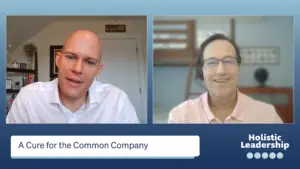On the Look-Out for Dry Eyes

For most of us, tears are associated solely with crying. In a moment of sadness or joy, we might shed a few tears–but otherwise, the curious water in our eyes is not something we typically worry about. Tears, as it turns out, are essential to maintaining eye health, helping to lubricate and nourish the eye with every blink. Insufficient tearing, however, can result in dry eye, a chronic issue that is becoming increasingly prevalent.
While it is particularly common in older adults, dry eye affects anyone whose body either does not produce enough tears, or simply produces poor quality tears. This may seem like a minor annoyance, but dry eye can lead to some serious complications. For instance, the tears you produce help clear away dirt or harmful particles from your eyes, and without this cleansing process, eye infections gain a foothold. Even barring infection, a lack of tears can lead to abrasion on the surface of the cornea, vision problems and even corneal ulcers
The rise in popularity of LASIK surgery has brought the condition of dry eye into prevalence. For the best surgical outcome, it is important to be able to detect and control dry eye prior to the procedure. Luckily, there are several tests to help detect this condition.
The Schirmer Test is perhaps the most straight forward as it involves placing a very thin strip of paper under the lower eyelid in order to measure tear production. In what is known as the “tear breakup time” (TBUT) test, a small amount of dye is placed in the eye to monitor tear distribution. For those concerned about tests that directly interact with the eye’s surface, a keratometer can be used to analyze the tear film through imaging. And rounding out our list of the more common tests for dry eye is MMP-9 Testing, which involves taking a small sample of tears from the bottom lid. It is quick and painless, providing results in minutes as to whether a patient is ready for LASIK or if further treatment is needed.
Luckily, dry eye is very treatable. It all comes down to managing the quantity of tears produced or drained from the eyes. If too few tears are produced, over-the-counter artificial tear solutions are available, or your doctor may prescribe higher strength eye drops if a larger increase in tear production is necessary. If, however, tears are being drained too quickly through the tear ducts, silicone plugs can be used to block the ducts so that moisture is kept in the eye longer. Finally, dietary supplements such as flaxseed oil or Omega-3 fatty acids are also helpful in treating this condition.
While dry eye certainly is more common in those over the age of 65, it is something everyone should be aware of, as it is often caused by allergic reactions or even a medication you may be taking for an entirely different condition.







